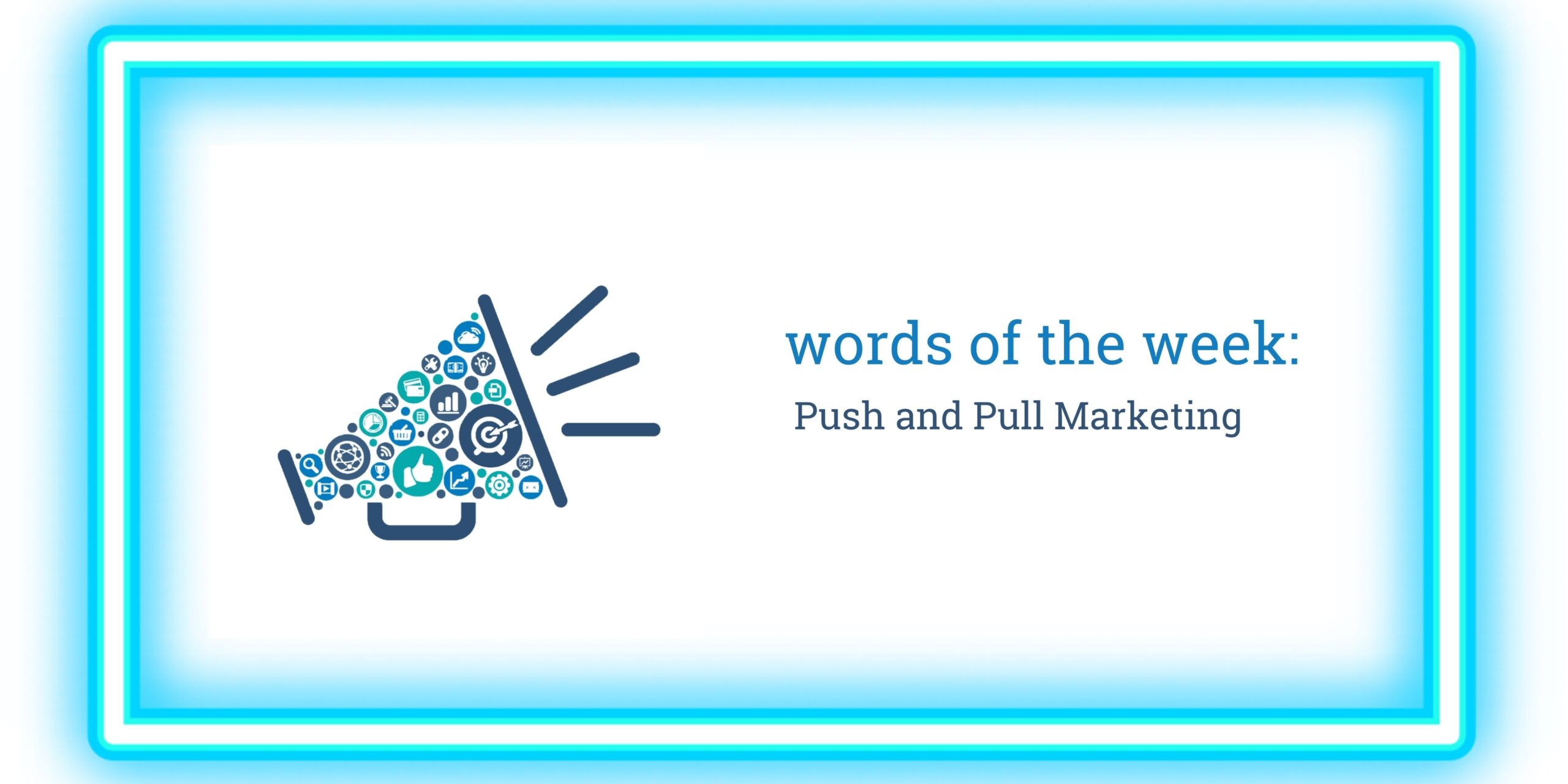Push and Pull Marketing
Welcome to words of the week, a new series aiming to deep dive into key marketing terms and how to use them in marketing strategies. For our first post, we are going to dive right into Push and Pull Marketing.
So what does Push Marketing mean?
Push Marketing is a shorter term strategy used when seeking new customers. Here you ‘push’ or ‘put’ your products in front of prospective customers. Other related terms for this are Direct Marketing or Outbound Marketing.
Traditional Push Marketing includes advertising like TV and outdoor billboards, but it also includes in-store point-of-sale (POS), trade events, showroom product showcases or demos.
Digitally, Push Marketing includes display banner ads and social media advertising.
When would you use a Push Marketing strategy?
Push strategies are important when you are; mind the pun, ‘getting your word out’. This can be when your brand, product or service is at the beginning of the product life-cycle, or in the introduction phase. Here you can use Push Marketing for objectives such as brand awareness or launching a new offering.
For products that are in the growth or maturity phases of the product life-cycle, Push Marketing strategies could be in the form of limited offers through identified key channels that existing customers are active on.
So what does Pull Marketing mean?
Pull Marketing is a longer term strategy best used with customers that are actively seeking a specific product or brand. Here the ‘gold’ is how you position your offering so that it is valuable to the customer and unique to your competitors. Pull Marketing can also be referred to as ‘Inbound Marketing’.
Pull Marketing tactics include Search Engine Optimisation (SEO), Pay per click (PPC), Blogs, Content Marketing and Social Media Marketing. We will cover off SEO and SEM in more detail in a separate post, but for now, here are some brief explanations on what these mean in relation to Pull Marketing.
SEO – Promoting and pulling people to your website through high rankings on search engine results through organic searches.
PPC – Where you pay a publisher a fee for each click that your website receives.
When would you use a Pull Marketing strategy?
Pull Marketing strategies are best used for demand generation or conversion objectives. Examples include providing offerings to customers based on their needs.
Pull Marketing tactics include blog posts, social media marketing, SEO and PPC.
Push and Pull Marketing – so what is the right strategy for you?
The answer is both but in the right balance. For example, Push Marketing could be used to create brand awareness, then Pull Marketing to progress prospects to leads through tailored offers . Likewise, Pull Marketing could be used for product consideration then Push Marketing in-store through product placement and demos.
If you would like to find out how to use Push and Pull Marketing for your business, please get in touch. Do you have a key marketing word or phrase that you would like deciphered? Please leave a comment below.

